
 I’m very fond of crystallized ginger, and accordingly I am substantially less fond of the Trader Joe’s Dark Chocolate Covered Ginger, whose ginger to “rich dark chocolate” ratio is weighted in chocolate’s favor to the point that the ginger is nigh imperceptible.
I’m very fond of crystallized ginger, and accordingly I am substantially less fond of the Trader Joe’s Dark Chocolate Covered Ginger, whose ginger to “rich dark chocolate” ratio is weighted in chocolate’s favor to the point that the ginger is nigh imperceptible.
The ingredients promise Australian crystalized ginger, and I do appreciate that Trader Joe’s, the J. Peterman of foodstuffs, has resisted the urge to embroider the tale with “harvested by koalas” or a story about backpacking across the outback while noshing on these or anything of that nature. But what’s given us instead of tasty, delicious ginger is waxy and overly sweet dark chocolate that is unappealing and which hosts a poverty of taste that is far from the promised richness.
The label makes no mention of fair trade or ethically sourced chocolate, which is honest, at least, and not the sort of “3% of our cacao beans are ethically sourced” shenanigans that some companies engage in. The smallish bag holds eight servings of what they claim is a 1/4 cup each, but these are apparently servings where the bits of chocolate repel each other, thereby taking up twice as much space in a measuring cup than normal.
All in all, a disappointing snack best suited to eating 3 am in an international airport, killing a few hours at a deserted gate while waiting for a lengthy flight, already sunk in ennui and listening to the echoes of the janitor’s footsteps as they mop a nearby lobby.
You can read this story at http://thegreenmanreview.com/food-and-drink/alas-poor-ginger-wherefore-art-thou-trader-joes-dark-chocolate-covered-ginger/
...
 I do a good bit of writing by hand, usually in a large hardbound sketchbook, although I sometimes like the feel of a nice narrow yellow-lined pad or the sprawl of an enormous expanse of drawing paper. And to write on these, while sometimes I’ll wander over into glitter gel pens or fine-point felt tips, my favorite is the Pilot Varsity disposable fountain pen.
I do a good bit of writing by hand, usually in a large hardbound sketchbook, although I sometimes like the feel of a nice narrow yellow-lined pad or the sprawl of an enormous expanse of drawing paper. And to write on these, while sometimes I’ll wander over into glitter gel pens or fine-point felt tips, my favorite is the Pilot Varsity disposable fountain pen.
Depending on where you’re getting it, the price varies from $3-10, with the high range of that usually appearing in fancy stores aimed at writers, which will strategically place a mug of them near that stack of leatherbound, gilt-edged journals locking with tiny moon and star clasps whose splendor will prove so intimidating to live up to that you will never actually use it. Overall, it will prove much cheaper to buy yours at an art supply store, which is where I get mine, since I go through at least a few each month.
I like writing with this pen because it never feels as though the nib and paper are dragging at each other. The nib could best be described as medium, somewhere well between broad point and narrow. The pen comes in a variety of shades and shows clearly what color it is at both the top and the bottom. For me, the availability of the color depends on how recently the store’s restocked, but the web tells me it comes in black, navy blue, red, green, pink, purple, and turquoise blue.
My only quibble with the pen is a small one that may not apply to many people’s experience. I am tough on pens. They end up jammed in purses, pockets, lost in coat linings, moved from one book bag to another. And so if your treatment of your possessions is overall gentler, which it probably is, you may not experience the same results I do, which is that about one in twenty pens ends up not exploding so much as getting a bit drippy to the point of ink-stained fingers.
You can read this review at http://thegreenmanreview.com/what-nots/making-words-flow-with-pilot-varsity-fountain-pens/
...
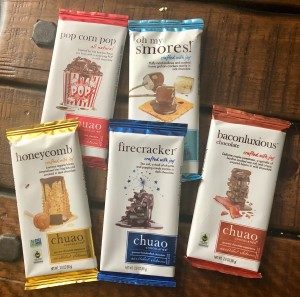 Here in America we like our add-ins, ice cream and candy full of other candy, nuts, random sweets, and sometimes savories. Chuao (pronounced Chew-WOW) has a shelf-load of such, chocolate bars with all the goodies, created by Venezuelan chef Michael Antonorsi.
Here in America we like our add-ins, ice cream and candy full of other candy, nuts, random sweets, and sometimes savories. Chuao (pronounced Chew-WOW) has a shelf-load of such, chocolate bars with all the goodies, created by Venezuelan chef Michael Antonorsi.
Most of the bars I tried were terrific but some are more successful than others. Idiosyncrasies of taste may make a difference; when I tweeted about the one I really disliked, someone mentioned that was their favorite, and bemoaned not being able to find it. And it’s not entirely fair to stack dark chocolate up against milk, particularly given that my sweet tooth resembles that of a six-year-old’s. Still, I present them in order of how much I liked them, from most to least.
First up, the “Baconluxious”. Described as “delicate maple sweetness, a sprinkle of bonfire smoked sea salt and crispy, uncured bacon in milk chocolate.” This had a nice aroma and when tasted, an immediate smoothness to its mouth feel, followed by a wash of saltiness and not-unpleasant grittiness before the final bacon note, leaving just a few salt crystals to be crunched between the tooth and savored. This was delicious to the point where I thought I would and then did readily pick one of these up again. And probably will again and again.
For the ingredient conscious, this 2.8 oz bar clocks in at 420 calories per bar (the label does the usual this is really 2 servings thing). It is 41% milk chocolate; 67% Fair Trade Certified, which means that up to 33% of it may come from places using child labor or other unfair trade practices. (Looking at these percentages was an interesting exercise; no bar was the same and it’s something I’m going to watch for, going forward.) No mention of non-GMO ingredients.
This was followed by the “Firecracker”. Described as “sea salt, a dash of chipotle and popping candy crackle in dark chocolate,” this had a lovely spicy saltiness that the sharp crackle accentuated, and a nice after crunch, all against a palatable dark chocolate background.
This bar is 400 calories total. It is 60% dark chocolate; marked as ethically sourced cocoa but not Fair Trade Certified, which means that up to 100% of it may come from places using child labor. However, it is non-GMO ingredients.

This bar is 380 calories in total. It is 49% Fair Trade Certified and the marshmallows are specifically non-GMO, while other ingredients are unspecified.
Fourth in line was the “Honeycomb”. Described as “luscious organic honey caramelized into crisp bits and enrobed in dark chocolate.” This had a surprisingly lovely honey note, very alive, that worked well with the dark chocolate.
This bar is 380 calories in total, and 60% dark chocolate. Ingredients specify that the honey contained in the bar is actual caramelized honey and that bee and honey dipper are not included, no mention is made of non-GMO ingredients. It is 95% fair trade certified.

This bar is 420 calories in total. It is not Fair Trade certified and no mention is made of non GMO ingredients.
The variances of text notes like Fair Trade proportions and non GMO ingredients from bar to bar reflects the varied demands of candy-making but does mean that consumers concerned about such things should be careful about reading the label. There are a number of inconsistencies across the labeling that make the overall presentation feel a bit incoherent here and there, but note I am a writer and tend to have strong opinions about these things that do not matter to most chocolate consumers.
You can read this review at http://thegreenmanreview.com/food-and-drink/chuao-chocolatier-all-the-add-ins/
...
As I drank my morning coffee and scrolled through Twitter one morning, I stumbled upon a preview for the Chilling Adventures of Sabrina. At first, I didn’t quite realize where it was from. The name sounded familiar, them it hit me! It was a reboot of Sabrina the Teenage Witch. I was instantly intrigued. I thought, if the executive producers of Riverdale worked on it, it must good right?
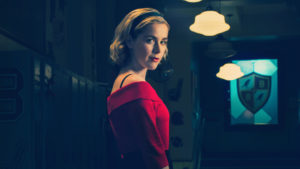
I am one for originals so let me start with Sabrina the Teenage Witch. Of course I had watched the new version first, but for the sake of old times, I revisited the original. And may I say, it was everything I missed. Hilda and Zelda’s relationship was like every sister’s relationship. They would get on each others nerves but in the end they always looked out for each other. Sabrina was also their pride and joy and would do anything for her!
Sabrina, in the sitcom, I found to be very brave and thoughtful. The moment she found out she was a witch, she used her magic for her friends and yes, sometimes her uses could be selfish. However, all of her uses of her magic, no matter what it was used for, came from the heart. Especially when it came to Harvey, who as you may know is her soulmate. Despite him being her boyfriend throughout the series, it never stopped Sabrina from pursuing her dream. Sabrina had also always been passionate about her studies and succeeding. This is part of the reason why I have always loved her as a character.
Salem takes the cake though. He is a comedic gift from the Gods. I mean it when I say Salem is the best character on the show. As most of you probably know, Salem is their family cat and has been with Hilda and Zelda for years. Salem is their familiar, but Salem has a backstory which is undeniably hilarious. Salem was originally a witch, but after attempting world domination, he was sentenced to hundreds of years of being a cat. Despite him being a cat, that doesn’t stop him from causing tons of shenanigans throughout the series. This just gives him more character.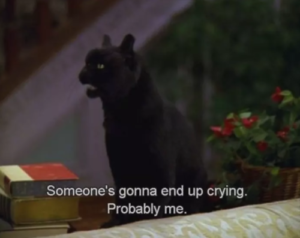
Yes, it may be goofy and yes, it may not be gritty, but it’s lighthearted. Sometimes, you just need a little laugh.
Now that I have clearly state my love for the 90s sitcom, I should state my thoughts on the Chilling Adventures of Sabrina.
Now, in this series being a witch is no surprise for Sabrina unlike in the Sitcom. She has known she was a witch since she was little and in this series, her parents have passed leaving Hilda and Zelda (including her cousin Ambrose, who was not in the sitcom) to take care of her. In the sitcom, Sabrina isn’t allowed contact with her mortal mother or her mother will be turned into a ball of wax. Her father, in the sitcom, was out traveling and working. The way they approached her parents in the Netflix series was just rather bleak.
Salem the cat in the new series, does not talk. He also does not have his awesome backstory not to mention that Sabrina attains Salem by summoning her own familiar. I would have nothing against this way of approaching introducing Salem. In fact, it is more or less that I’m angry that Salem doesn’t talk. He doesn’t bring anything to the table in the new series. Salem, in fact, is hardly shown in the show despite him being very important in the sitcom version.

Now, let’s talk about Harvey. This is something that I hold a lot of thoughts on. In the sitcom Harvey is a doof. He’s goofy and somehow never found out that Sabrina was a witch for years. Netflix must’ve upped Harvey’s IQ because he does not skip a beat in the new series. Not to mention the fact that despite Harvey being Sabrina’s boyfriend, he was always sort of a side character.
In the Netflix series, you are introduced to Harvey’s family. Of course, you’ve had some backstory for Harvey in the sitcom. You knew his parents were together, he had sibling and his dad worked as an exterminator. In the Netflix series, Harvey has a brother and a dad, and his dad works in a mine. His dad, in the Netflix series, is rather aggressive and abusive, which was never established in the sitcom.
My final comparison about Harvey comes to his reaction to when he finds out that Sabrina is a witch. In both series Harvey is clearly did not handle Sabrina being a witch very well. In the sitcom Harvey ends up breaking up with Sabrina for a very short moment. Towards the end of the series, Harvey ends up patching up things with Sabrina. In fact, they end up becoming very good friends like they did in the beginning of the sitcom. In the Netflix series, Harvey wants to end all ties with her. He acted like being a witch was the equivalent of being a monster. In fact, even when Sabrina tries to patch things up and help Harvey, he still treats her like a monster.
This leaves me to my final thoughts. I would like to end this post talking about how the two series deal with the topic of witches. In the sitcom, they treated witches differently than in the Netflix series. In Sabrina the Teenage Witch, all the witches lived harmoniously. They had their own government, The Witches Council, and lived in what they called the Other Realm. However, some witches chose to live in the mortal realm, which is earth.
In the Chilling Adventures of Sabrina, they use cliche witch backgrounds. They make them seem quite evil when they really are not. Of course I am not saying there aren’t any witch stereotypes in the sitcom. In the sitcom, they have their familiars and also make potions in cauldrons, however, those do not compare to the stereotypes portrayed in the Chilling Adventures of Sabrina. In the Chilling Adventures of Sabrina, they portray witches like every media platform does. This bothered me the most.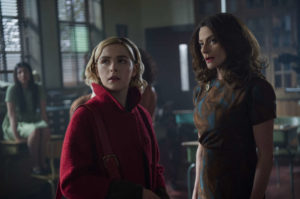
I love the sitcom because it is not full of stereotypes. It doesn’t make witches out to be Satan loving monsters. Not all witches, in my opinion, are Satan loving monsters. I understand they wanted to make a gritty remake, but what made the sitcom so original to me was how lighthearted it was, even if they did touch up on difficult topics.
The way Netflix portrayed witches to me was something that I’ve seen so many times before. Making witches Satan worshippers is so. . .overused and not at all true. Today, there are people who identify as witches who do not worship Satan. I find the use to having a “dark baptism” and celebrating their “lord Satan” in the Netflix series is stereotyping and frankly, rude.

Lou is a writer of rom coms, eater of pizza, lover of 90s boybands and cat enthusiast. You can follow her on Twitter at @aweosmewriter.
Enjoy this writing advice and want more content like it? Check out the classes Cat gives via the Rambo Academy for Wayward Writers, which offers both on-demand and live online writing classes for fantasy and science fiction writers from Cat and other authors, including Ann Leckie, Seanan McGuire, Fran Wilde and other talents! All classes include three free slots.
If you’re an author or other fantasy and science fiction creative, and want to do a guest blog post, please check out the guest blog post guidelines.
...
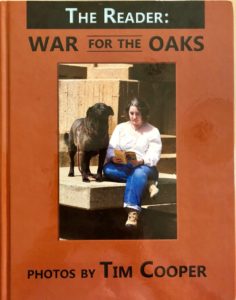
The Reader: War For The Oaks is a hardbound book presenting a photography project by Tim Cooper. It’s a slim little 8.5″³x 11″³ volume, clocking in at 96 pages. The pleasant interior design presents the photos nicely, along with some pretty arboreal details. The cover, whose design is unobjectionable but unremarkable, features a photo that lets the reader know exactly what the book is about: photos of people reading War For the Oaks in various Minneapolis locations.
There are a few books I have re-read so many times that they are an integral part of fantasy to me, and Emma Bull’s first novel, War for the Oaks is one of them, featuring Eddi McCandrey and her half-human, half-elvish band, the Fey. It was originally published in 1987; the paperback copy I’ve been carrying around for decades is battered and coverless now, but it was a pleasure to have the task of going back and reading it yet again in order to do this review.
I’m not alone in loving this story, and the book’s part in defining and shaping urban fantasy cannot be overestimated. Reading in many ways like a crisper, less Romantic version of Charles de Lint, Bull demonstrates in this book that despite being one of the quieter writers, she will become a major talent. Many nifty but commercially non-viable projects that we would miss if reliant only on traditional publishing have come out in recent years, often supported through crowdfunding; this one was a Kickstarter project. It’s delightful to see a project dedicated to the novel in this way, celebrating how much the book has meant to many readers.
Which is perhaps my major caveat. This book will enchant, down to their very toes and beyond, those who love Bull’s novel and know the city as well. Cooper’s photos show locations from the book in an order corresponding to the novel’s chronology, each time with people reading War for the Oaks somewhere in the picture. For someone who loves the book in part because of its setting, the sole disappointment may be that the photo are low enough resolution that sometimes it is difficult to make everything out.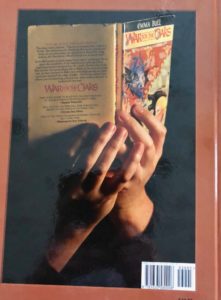
Familiar with the book but not so much with the city? Mileage will vary here, depending both on one’s degree of affection for the book as well as how firmly the reader is attached to their vision of things. Someone with a mental vision that is particularly strong, in fact, might find it jarring to have it contradicted by these pictures.
Familiar only with the city? Here again mileage will vary radically depending on factors like how interested one is in examples of projects like this or if one is a book collector specializing in fantasy and science fiction (in which case, you’ve probably had the novel on your list but just never got around to it). Lovely extra details scatter themselves here and there throughout the book, as well as photos featuring other authors like Elizabeth Bear, Stephen Brust, PamelaDean, Marissa Lingen, Scott Lynch, and Patricia C. Wrede. Essays by Dean, Sigrid Ellis, Sarah Olsen and Katherine St. Asaph appear at the back, along with a poem by Alec Austin.
Familiar only with the city? Here again mileage will vary radically depending on factors like how interested one is in examples of projects like this or if one is a book collector specializing in fantasy and science fiction (in which case, you’ve probably had the novel on your list but just never got around to it). Lovely extra details scatter themselves here and there throughout the book, as well as photos featuring other authors like Elizabeth Bear, Stephen Brust, PamelaDean, Marissa Lingen, Scott Lynch, and Patricia C. Wrede. Essays by Dean, Sigrid Ellis, Sarah Olsen and Katherine St. Asaph appear at the back, along with a poem by Alec Austin.
I’ve stuck this on one of my shelves of favorite F&SF next to that battered paperback copy of War for the Oaks, because it’s definitely a keeper. Next time I’m at a con with the author, I may even take it along, because having it signed by the person whose book inspired so much passion would make it even niftier.
(Tired Tapir Press, 2014)
You can read this review at http://thegreenmanreview.com/books/recent-reading-eddi-and-the-feys-revival-tour/
...
 Reckoning 2: Creative Writing on Environmental Justice is solid in weight and content. The stories, poetry, essays, and art deal with the world around us and our ethics in dealing with it. This refined focus sharpens the magazine’s impact, I think, and makes it something that tries to evoke change through its art rather than the shallow comfort afforded by something whose theme was simply “Nature”.
Reckoning 2: Creative Writing on Environmental Justice is solid in weight and content. The stories, poetry, essays, and art deal with the world around us and our ethics in dealing with it. This refined focus sharpens the magazine’s impact, I think, and makes it something that tries to evoke change through its art rather than the shallow comfort afforded by something whose theme was simply “Nature”.
The annual’s mission statement is A locus for the conflict between the world as it has become and the world as we wanted it to be. Editor Michael DeLuca’s opening editor’s note, “On Having a Kid in the Climate Apocalypse,” deals with a life situation that makes that mission even more pressing: having a kid:
My son is three months old. He has no idea what the world is, what it has become. I can say anything in front of him. I can curse. I can cry. He’s happy or he’s sad. there’s no cause and effect. I can read to him from A Tree Grows in Brooklyn, a book that spends hundreds of pages drawing an analogy between a child growing up and an invasive tree species flourishing in a sidewalk crack, a book full of compassion for the poor hated by the rich, casual about the hatred it portrays for people of other cultures. He doesn’t understand a word.
The essay is intimate, frank, and willing to comtemplate its own imperfections:
Maybe this revelation isn’t for everyone. Maybe not everyone needs it. Maybe, to people who aren’t white, aren’t straight, aren’t privileged children of educated families, some of this is so painfully obvious. I’ve spent this essay embarrassing myself. I needed it. I needed to write it. I needed my assumptions undermined and broken up and reassembled around someone who wasn’t me.
While there are several essays in the magazine, all of them nicely put together and executed, my favorite pieces from the issue are all stories:
“Wispy Chastening” by D.A. Xiaolin Spires is slight but significant, much like the narrator’s crimes against the environment, turning this into a sharp look at the idea of thinking globally but acting locally, or even individually.
“To the Place of Skulls” by Innocent Ilo provides an Afrofuturist post-apocalyptic world where its protagonists visit a landscape of grit and myth:
We are going to the Place of Skulls: Saro-Wiwa, Babbe, Gokana, Ken, Nyo, Ueme, Tai, and myself. For you to know, this is not the place Bro Lucas said Jesus was crucified when he was spitting into my face from the broken lectern during his sermon, last Sunday. The Place of Skulls is where a stark reality stares us in the face. We all have after-school exhaustion, Babbe’s diarrhea has worsened, Gokana is still nursing the burns on his legs from our last visit and Mama will yank at my ear if she hears fim about it, but we must go. The Place of Skulls is that important.
“Girl Singing with Farm” by Kathrin Köhler broke my heart and yet I know I’ll go back and read it several more times. What seems like it may be simplistic turns into a beautiful, layered story with a final image that will linger with the reader.
I’m saving the best for last and that is the story “Fourth-Dimensional Tessellations of the American College Graduate” by Marie Vibbert. I love this story so much that I am not going to discuss a single detail except that the ending made my heart leap and it is my favorite story of 2018 so far. I will hold onto my copy of this magazine forever because it contains it.
Highly recommended for those enjoying more literary SF as well as thoughtful essays.
(Reckoning Press, 2017)
You can read this review at http://thegreenmanreview.com/books/recent-reading-reckoning-2/
...
 I’ve never reviewed a chocolate bar before and I will, furthermore, confess a shameful love for plain Hershey’s bars that dates back to the time my grandmother was first left with me unattended and violated my mother’s up-to-that-point successful “no candy” policy.
I’ve never reviewed a chocolate bar before and I will, furthermore, confess a shameful love for plain Hershey’s bars that dates back to the time my grandmother was first left with me unattended and violated my mother’s up-to-that-point successful “no candy” policy.
However, the Stonewall Kitchens Dark Chocolate Chili Cinnamon and Nibs bar is a very far thing from that Hershey’s bar. It is dark as a stormy night, but carries a surprising amount of heat (of the various chili-augmented chocolate bars I’ve tried, it is the most fiery.) The darkness is a mellow one, developing a deliciously unctuous mouth feel. This is a nibbling bar, to be savored, bit by bit, each time edging up to almost too spicy and then backing away at the last moment.
My only nitpick with the chocolate bar overall would be that the cocoa nibs add texture, but I’m not sure I found them necessary. They seemed more like dry little distractions from the chocolate experience.
The ingredient list is substantially shorter and freer of long chemical names than that Hershey bar: dark chocolate, cocoa nibs, chipotle chili pepper powder, cinnamon powder, and cinnamon bark oil adding up to 440 calories for the three-ounce bar. Definitely a bar that I’d buy again if the opportunity presented itself, and it makes me curious to try their other products.
You can read this review at http://thegreenmanreview.com/food-and-drink/stonewall-kitchen-dark-chocolate-chili-cinnamon-and-nibs-bar/
...
Want access to a lively community of writers and readers, free writing classes, co-working sessions, special speakers, weekly writing games, random pictures and MORE for as little as $2? Check out Cat’s Patreon campaign.

"(On the writing F&SF workshop) Wanted to crow and say thanks: the first story I wrote after taking your class was my very first sale. Coincidence? nah….thanks so much."

(science fiction, short story) The bots were going to run Linus out of room soon, if they didn’t scavenge away some piece vital to the ship’s functioning and leave him choking on vacuum first. He didn’t think anyone else had these problems with their ship bots. Galina would say it was his own fault for encouraging them.


This site is protected by reCAPTCHA and the Google Privacy Policy and Terms of Service apply. This site is a participant in the Amazon Services LLC Associates Program, an affiliate advertising program designed to provide a means for sites to earn advertising fees by advertising and linking to Amazon.com.